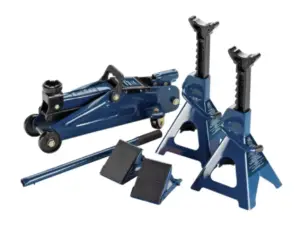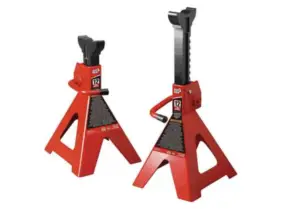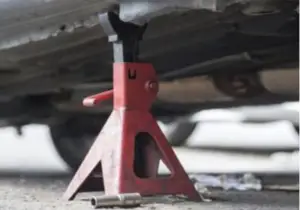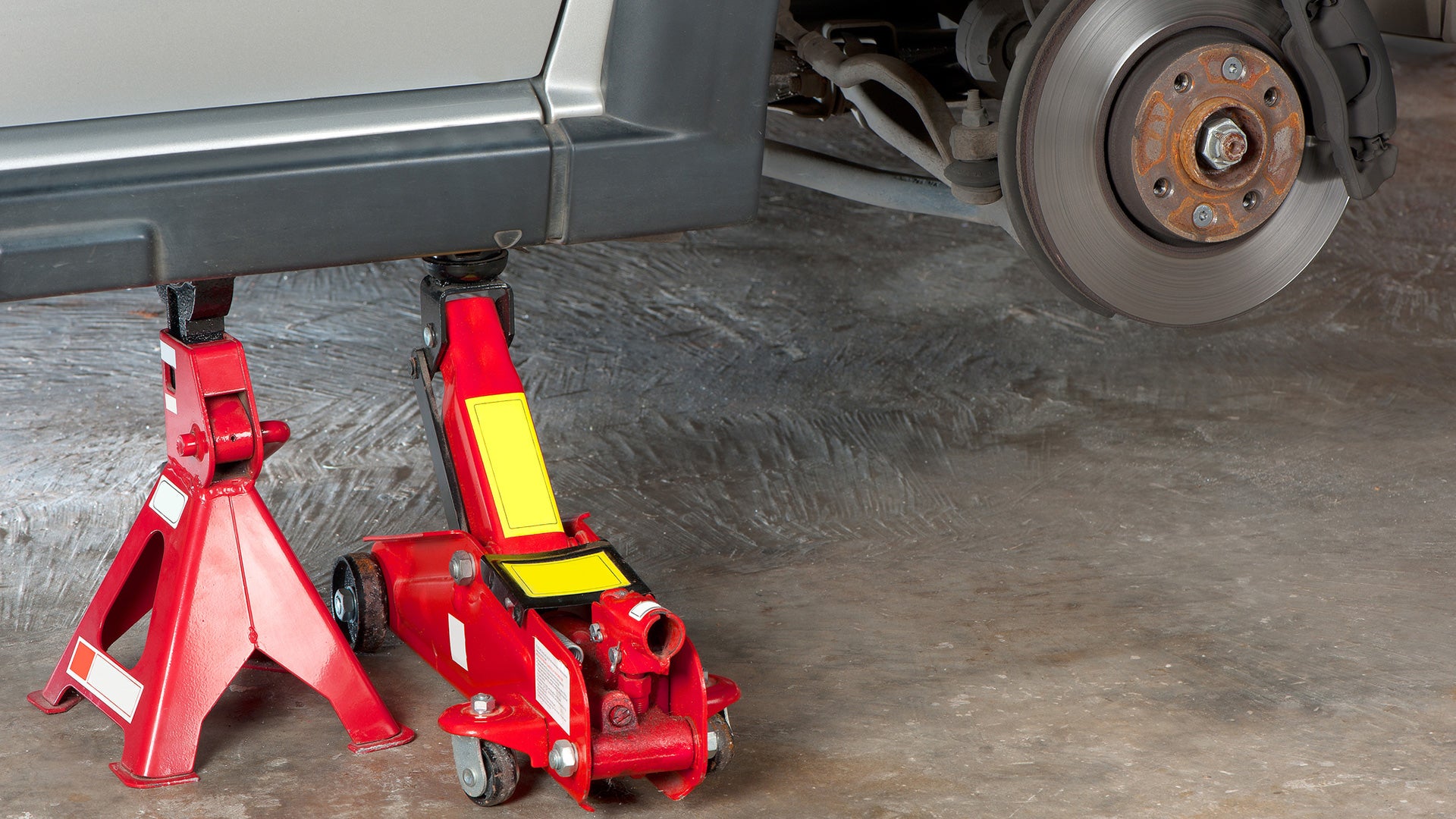Winter turns its back on us and makes way for spring. For many, it will soon be time to change their motorhome tires, and many people are now faced with the flood of jack stand offers.
Which jack stand is the right one for me?
If I type in “jack stand” on Uncle Google, I get presented with a whole range of different results. From hydraulic jacks to scissor jacks to trolley jacks. But which one is suitable for me and makes lifting my car or motorhome the easiest for me? And which jack can I use both for regular and planned tire changes and as an emergency jack when on the go?

Jack stands and their safety
All jack stands on the market generally meet a certain level of security. But if you want to be on the safe side, look out for devices that have the government-issued seal. Before use, you should of course take another look yourself to see whether the jack stand shows cracks, defective welds, or other recognizable damage.
In general, when the vehicle is raised, leave your hands and feet under the vehicle and the tires and never crawl under the vehicle. Then nothing happens even if the lifter fails.
Jack stand and the required load
This depends heavily on the weight of the vehicle. If you change a tire, depending on the situation, up to 40% of the vehicle’s weight can press on the jack. In individual cases (with slopes etc.) this can even be exceeded. The device of your choice should therefore also be designed for this load.
What does the jack stand lifting height matter?
Most of the time, the lifting height is given with a minimum value and a maximum value. The minimum value usually indicates the overall height of the jack stand. The maximum lifting height indicates the height to which the jack can be extended. For example, if a lifting height of 11 to 47 cm is specified, this means that I need at least 11 cm of space under the vehicle and can then raise it by 36 cm until a height of 47 cm is reached.
Caution: When you measure your vehicle, be sure to keep in mind that the vehicle must first be lifted out of the suspension until the tires detach from the ground. It is best to measure this so-called spring deflection with an existing jack.
You also have to bear in mind that if you have a flat tire, the tire can be completely flat. Then the distance from the jack mounting surface to the floor is reduced accordingly.

The different types of jack stands
All jack stand types have their advantages and disadvantages and differ in terms of operation and area of application.
The scissor jack stand
The scissor jack is already included in the onboard tool for most mobile homes and some cars. This is a diamond-shaped jack that is relatively light and space-saving compared to other types of jack. A threaded rod connects both sides. With the help of a crank or ratchet, these are then pulled together when jacking up and the motorhome is raised. To lower it, crank again in the other direction, the sides part and the motorhome comes back on its feet.
The trolley jack stand
This is the most maneuverable jack that comes on castors and mostly works with oil pressure (hydraulic). This greatly simplifies lifting. Thanks to the castors (often 2 of them are movable and 2 are immovable), the vehicle can theoretically still be moved on level ground after it has been raised. In addition, the jack can be easily positioned under the car thanks to the rollers.
By means of a lever that is moved up and down, the oil pressure builds up and the lifting arm of the jack is raised. After changing the tires, a valve is opened and the motorhome lowers again. Lifting requires little force thanks to the hydraulics and the lowering process is quick and easy.
What sounds good at first is not always perfect in practice. The lifting height of the standard jack (usually up to 35 cm) is often not sufficient for a motorhome. For greater lifting heights, you have to dig deeper into your pockets. In addition, it can only be used stationary, as it is large and very heavy (15 kg, but often significantly more).
The stamp jack stand
The heavy laborer among the jacks stands. Stamp jack stands are the most powerful jacks and there are variants that can lift up to 30 tons. Even the largest mobile homes are no problem for them. They are available as a hydraulic or pneumatic version and, in professional workshops, also as an air pressure version. The most well-known variant is the hydraulic variant. The lifting force is built up here by means of oil pressure.
The balloon jack stand
It’s a very special kind of jack. It’s like a big airbag with a connection for the exhaust (sometimes for a compressor). It is then pumped up via exhaust gases or compressed air. Originally used in rallying, this jack stand is particularly strong on uneven or very soft ground. It can raise the car where other jacks sink into the mud or cannot find a safe stand. It is also light in weight and requires little space for storage.
However, it also has its disadvantages. The connection piece on the exhaust must be held for filling. This means that a second person is always required to monitor the inflation process of the balloon and ensure that it unfolds correctly and does not press on sharp edges when it is inflated. In addition, the vehicle can slip on sloping terrain, as it does not bear very stable weight on the jack. The exhaust gases that are pumped into the balloon are of course released again when it is deflated. It is certainly not health-promoting if you stand by.

What is the best jack stand for me?
There is no such thing. Each type has its own strengths and weaknesses.
In general, hydraulic jacks are much easier and more energy-saving to operate than the scissor jack. Due to its low height and very low weight, it has the right to exist as an emergency tool on the go. Anyone who travels a lot off-road is not entirely wrong with a balloon jack.
Before buying, you should always think carefully about the purpose for which you want to buy a jack and whether you might even want to use two jacks depending on the situation. Then, for example, a scissor car jack is recommended for emergencies on the go and a trolley jack for convenient tire changes at home. Anyone who drives particularly heavy mobile homes or, as we only want to use a jack, can hardly avoid a stamp jack.
Which jack stand do you use?
How about you? Have you found the perfect jack for you and your car or are you still looking? Tell me about your experiences in the comments.

